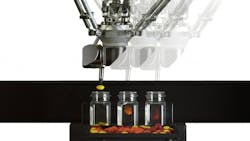Chris Bailey can't emphasize it enough: Lincoln Electric Co. (IW 500/299) in recent months has been "barraged" with inquiries about the company's robotic welding systems.
The barrage is coming from manufacturers that survived the recession and are looking for ways to increase output in the face of a strengthening economy -- without adding headcount.
"So they're looking for more productivity tools," says Bailey, general manager of Lincoln Electric's Automation Division.
The interest in robotic welding systems, Bailey adds, isn't just coming from the industry's core customers, automotive companies.
With the equipment, pendants and software becoming easier to use, and price points coming down, Bailey is seeing more interest from a wider range of industrial users -- from aerospace to alternative-energy companies, from large to small manufacturers.
Robotics instructor John Wieczerza isn't surprised.
"These are very, very versatile robots that [the industry is] coming out with," says Wieczerza, a professor of engineering and advanced technology at Macomb Community College in Warren, Mich. "We're looking at the entire industrial spectrum -- you name it and you'll find a robot."
Macomb Community College, which launched a joint robotics certification program with Fanuc Robotics America Corp. in September 2010, notes that its certificate is applicable not only to the automotive industry but also to the aerospace, consumer-goods, food, medical, pharmaceutical and solar-panel industries.
"In the '80s, there was only one size of robot, and it basically only did one thing," says Mike Cicco, general manager of distribution sales for Fanuc Robotics America. "And right now, there are over 200 different types of robots that [Fanuc offers], and they have the ability to pick up 500 grams all the way up to 3,000 pounds. So the number of different places we can put them is really incredible."
Along with that wider range of capabilities, Cicco explains, robots' heightened vision and intelligence are making them more accessible to small and midsize manufacturers.
Big Impact on Small Job Shops
As an illustration, Cicco points to machine tending in a small job shop.
"If you were to do this before the robots had a sense of sight, you would have had to create a fixture for every single part that you ever manufactured or ever wanted to manufacture, so that part could be fixed located in the exact same spot every single time because the robot would just blindly move over there and pick up that part to be able to load it into the machine."
Thanks to robotic vision, now the job shop only has to program an image of the part into the robot, "and then the robot is pre-programmed to go pick up that part and load it into the machine," Cicco says.
"Whereas in automotive, all the robot does for three straight years is pick up this one transmission part for this one engine component and it machines 14 million of these things, we're now able to broaden our horizons into smaller places that run more variations of parts because now the robot has the flexibility to go in and handle huge variations of different parts and still be really cost-effective."
About the Author
Josh Cable
Former Senior Editor
Former Senior Editor Josh Cable covered innovation issues -- including trends and best practices in R&D, process improvement and product development. He also reported on the best practices of the most successful companies and executives in the world of transportation manufacturing, which encompasses the aerospace, automotive, rail and shipbuilding sectors.
Josh also led the IndustryWeek Manufacturing Hall of Fame, IW’s annual tribute to the most influential executives and thought leaders in U.S. manufacturing history.
Before joining IndustryWeek, Josh was the editor-in-chief of Penton Media’s Government Product News and Government Procurement. He also was an award-winning beat reporter for several small newspapers in Northeast Ohio.
Josh received his BFA in creative writing from Bowling Green University, and continued his professional development through course-work at Ohio University and Cuyahoga Community College.
A lifelong resident of the Buckeye State, Josh currently lives in the Tremont neighborhood of Cleveland. When the weather cooperates, you’ll find him riding his bike to work, exercising his green thumb in the backyard or playing ultimate Frisbee.
